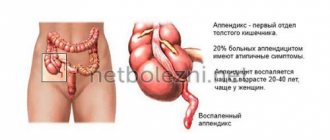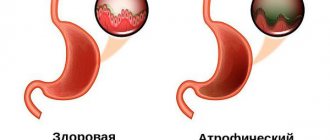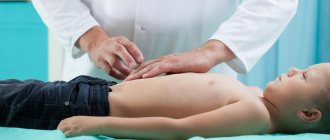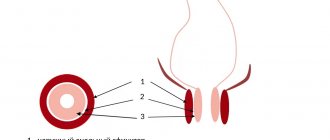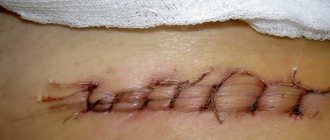- home
- general surgery
- Abdominal adhesions
Interview with Professor Puchkov on the First Medical Channel on the topic: Adhesive disease
As a rule, the internal organs and tissues of the body have a smooth surface. Normally, organs do not stick together and glide easily. When the surface of an organ, tissue, or body cavity is damaged, inflamed, or has a scar, there is a risk of adhesions between organs (adhesions). The organs are connected to each other by fibrous fibers and “stick” to each other. This phenomenon is called adhesive disease.
Symptoms of adhesive disease
Adhesions limit the movements of internal organs (primarily the small intestine) and disrupt their normal functioning, which can manifest as abdominal pain, the development of nausea and vomiting, and difficulty passing gases. Sometimes the adhesive process causes female infertility, preventing the fertilized egg from entering the uterus.
The clinical picture of the disease largely depends on the prevalence of the pathological process and the neglect of the condition. The following stages of the adhesive process in the abdominal cavity can be distinguished:
- Asymptomatic form - no pain or clinical manifestations. Such adhesions can be discovered accidentally during abdominal surgery.
- Painful form. The pain is constant or occurs as a result of a sudden change in body position, heavy lifting, defecation, sexual intercourse, or physical activity. The pain may go away on its own or after taking painkillers.
- Acute intestinal obstruction is the most severe manifestation of adhesive disease. Develops as a result of obstruction of the passage of feces through the intestines. Adhesive intestinal obstruction requires immediate medical attention and often surgical intervention.
It can be difficult to determine the cause of abdominal and pelvic pain. Often examinations give negative or inconclusive results. Sometimes adhesions are detected on ultrasound, MRI and CT. In rare cases, adhesions may be detected by a doctor during a gynecological examination. A study of the patient's medical history and medical experience in assessing the pain problem helps to suspect the presence of adhesive disease.
Adhesions after appendicitis
Appendicitis
is an inflammation of the vermiform appendix of the cecum (appendix).
In the population, the incidence of appendicitis exceeds 5%. It is most often observed in adolescents, but can be registered at any age.
The operation to remove an inflamed appendix (appendectomy) is the most common in abdominal surgery and accounts for 25% of all emergency operations.
Main reason
development of appendicitis is – blockage of the appendix due to:
- proliferation of lymphoid tissue of the appendix due to various inflammatory bowel diseases or infections (more common in childhood and young people);
- stagnation of feces, formation of coprolites (in elderly patients);
- parasites, worms (especially in eastern countries);
- less often foreign bodies or neoplasms.
Clinical and laboratory signs of appendicitis
Acute abdominal pain is the most striking and common symptom of appendicitis.
The clinical picture of acute appendicitis develops within 4-48 hours.
Classic symptoms of acute appendicitis include:
- pain in the epigastrium or navel area;
- nausea, vomiting;
- displacement of pain from the epigastrium to the right iliac region of the abdomen;
- increased pain when coughing and moving;
- increased body temperature;
- retention of stool and gases;
- loose stools are quite rare, more often in children, when the inflammatory process spreads to the sigmoid or rectum;
- an increase in the number of leukocytes (12–15 thousand/μl) in a clinical blood test.
Unfortunately, classic manifestations occur in less than half of patients with appendicitis.
There is variability in the symptoms of appendicitis. The pain may not be localized, may be vague or, in rare cases, absent, especially in children.
In the elderly and pregnant women, atypical manifestations are common: pain and local tenderness are less pronounced.
In a blood test, an increase in the number of leukocytes may not be observed from the first hours of the disease.
Acute appendicitis can be disguised as a food infection, which can lead to delay, late presentation to the surgical hospital and, as a consequence, the development of a dangerous complication - peritonitis.
At the slightest suspicion of appendicitis, you should immediately consult a surgeon.
Diagnosis of acute appendicitis
Diagnosing acute appendicitis can be difficult. The surgeon takes into account the patient’s complaints, clinical examination data, and laboratory research methods. Considering the variability of the manifestation of the disease, additional research methods are often required:
- ultrasound examination (ultrasound);
- computed tomography (CT);
- magnetic resonance imaging (MRI);
- diagnostic laparoscopy.
It should be noted that to make a diagnosis of acute appendicitis, the information content of ultrasound examination
limited, but is of greater importance for differential diagnosis with other diseases of the abdominal cavity and pelvic cavity (especially in women).
CT scan
is not always available for emergency use, but is invaluable for differential diagnosis, especially in patients with obesity or atypical localization of the appendix.
MRI
of the abdominal cavity to diagnose appendicitis is carried out only in pregnant women for whom research methods using ionizing radiation are contraindicated.
Sometimes, even after a complete examination, it is difficult to confidently diagnose acute appendicitis and confirm the need for an appendectomy. Therefore, dynamic monitoring of the clinical picture and laboratory and instrumental parameters is necessary.
, diagnostic laparoscopy is performed to clarify the diagnosis.
. The advantage of diagnostic laparoscopy is that once the diagnosis is confirmed, surgery to remove the appendix is performed immediately.
Before the introduction of laparoscopy into routine surgical practice, the frequency of diagnostic errors in acute appendicitis was quite high, 15-25%. Women of fertile age and pregnant women were especially often at diagnostic risk. In women of reproductive age, symptoms of acute gynecological diseases, especially of an inflammatory nature, manifest themselves in a similar way to acute appendicitis, which can lead to overdiagnosis of appendicitis and removal of a slightly changed appendix.
Classification of clinical forms of acute appendicitis
Acute appendicitis is divided into forms, which are successive stages of development of the pathological process:
- catarrhal (simple, superficial);
- phlegmonous;
- empyema of the appendix;
- gangrenous.
Complications of acute appendicitis
If acute appendicitis is not diagnosed and operated on in time, the following complications may develop:
- perforation (perforation of the wall of the appendix);
- purulent peritonitis (inflammation of the peritoneum as a result of purulent melting of the appendix);
- abscess (enclosed abscess) of the abdominal cavity;
- appendicular infiltrate and others.
Infiltration around the appendix or its perforation can lead to the development of a periappendiceal abscess
(accumulation of encysted infected effusion (pus) around the appendix) or diffuse purulent peritonitis (infection of the entire abdominal cavity).
If perforation of the appendix occurs, the severity of the patient's condition worsens, and the risk of mortality increases (about 1%).
The main reason for a ruptured appendix is a delay in diagnosis and surgical intervention.
Treatment of acute appendicitis
Treatment of acute appendicitis involves surgical removal of the appendix (appendectomy) either open (an incision in the abdominal wall) or laparoscopically.
If acute appendicitis is diagnosed during laparoscopy, in the absence of complications, laparoscopic appendectomy is performed.
If during laparoscopy diffuse peritonitis or an inconvenient, atypical location of the appendix is detected, then an open appendectomy is performed.
Complications after appendectomy
Any surgical procedure has a risk of complications. The incidence of complications after appendectomy ranges from 2.1% to 4.6%.
Early complications after appendectomy may be associated with purulent-inflammatory processes in the abdominal cavity.
The later the appendectomy is performed from the onset of symptoms, the higher the likelihood of purulent-inflammatory complications.
Late complications are mainly associated with adhesions in the abdominal cavity that developed after the disease and surgical treatment.
The severity of the adhesive process after appendectomy depends on the clinical form of appendicitis for which it was operated on, the presence/absence of complications of acute appendicitis, the course of the postoperative period and the reactivity of the body.
Adhesions formed after appendectomy
can “squeeze” the intestinal loop and provoke the development of acute intestinal obstruction.
Acute appendicitis, complicated by peritonitis, can cause tuboperitoneal infertility in women due to the development of adhesions in the pelvic area.
Literature reviews indicate that up to 40% of cases of acute intestinal obstruction occur after the patient has undergone an appendectomy.
Prevention of the development of adhesions after appendectomy
Prevention of adhesions after appendectomy begins even before the operation.
Delaying surgical treatment leads to more pronounced inflammatory changes in the appendix and increases the risk of purulent-inflammatory complications. It is important to perform an appendectomy at the phlegmonous stage, without leading to the development of a gangrenous form and complications.
With uncomplicated appendectomy, there is an additional opportunity to prevent adhesions by using an anti-adhesive barrier. It is most advisable to use a barrier in the form of a gel, which allows you to envelop the complex anatomical formations of the abdominal cavity. Hyaluronic-containing anti-adhesion gel Anti-adhesin, in addition to barrier properties, has additional properties: it promotes better tissue regeneration.
Before completing the appendectomy operation, to prevent adhesions, the surgeon treats the surface of the cecum, the parietal peritoneum of the right iliac region with anti-adhesion gel, and in women additionally applies the gel to the area of the right appendages.
In case of complications of acute appendicitis, anti-adhesive barriers are not used, since the tactics of wound management in such patients are different: washing the abdominal cavity with solutions, leaving a drainage to drain the contents from the wound.
After an appendectomy, the patient is prescribed:
- antibacterial drugs;
- a diet with easily digestible food in small portions;
- stool control;
- early activation;
- physiotherapy;
- Physiotherapy may be recommended after discharge from hospital.
Discuss adhesion prevention with your surgeon before surgery.
Surgical treatment of adhesions
Watch a video of operations for abdominal adhesions performed by Professor K.V. Puchkov. You can visit the website “Video of operations of the best surgeons in the world.”
Video from the operating room. Laparoscopic cystadnexectomy for severe adhesions
In most cases, adhesions do not cause symptoms or discomfort, and such situations do not require treatment. Surgical intervention to separate adhesions is used in cases of pain, the threat of intestinal obstruction, and infertility in women.
The operation to separate adhesions is performed using laparoscopy. It is precisely these minimally invasive surgery techniques that allow for accurate and gentle dissection of adhesions.
During the operation, modern anti-adhesive barriers are used, which minimize the loss of fibrin (a protein that promotes clotting) in the area of intervention and several times reduce the likelihood of relapse of adhesive disease.
If open (laparotomy) surgery cannot be avoided, we use special anti-adhesion membranes that are located between the organs and prevent adhesion and adhesions. These materials spontaneously dissolve in the abdominal cavity without leaving a trace within 7–10 days.
The operation usually takes about one hour. After surgery, the patient spends on average 2–3 days in the clinic. It is advisable to spend another three days in Moscow (relatives, a hotel are nearby). We perform a follow-up examination and make recommendations for further treatment. Then you can safely return home.
An operation to separate abdominal adhesions must be performed by a surgeon with extensive experience in such operations, both open and laparoscopic methods. I have been performing similar operations since 1993 and currently have experience in more than 900 similar interventions for various forms of adhesive disease of the abdominal and pelvic organs.
How to cure adhesions on the ovaries / appendages
Of course, the consequences described above are not inevitable; it all depends on the specific situation and the timeliness of contacting a good paid clinic. In Moscow, the best specialists with more than ten years of successful experience in this field are at your service.
How is the diagnosis made?
The diagnosis takes into account medical history (previous gynecological diseases, abdominal surgery, surgical abortions, cesarean sections, etc.), the woman’s complaints, the results of a manual vaginal examination, and ultrasound data.
Adhesions in the pelvis are usually not visible on ultrasound, but when conducting a study with a vaginal sensor, the ultrasound signs of the presence of an adhesive process are primarily important, for example, displacement of the uterus to the side or posteriorly (bending of the uterus), adhesion of the ovary to the uterine ligaments, displacement appendage to or behind the uterus, the presence of an expanded venous network or varicose veins in the pelvis.
During a vaginal examination, the doctor will feel limited mobility of the pelvic organs affected by adhesions, heaviness in the projection of the appendages on the right, left or both sides, pastiness of the vaults and the area of the retrouterine space. For example, pain and thickening of the appendages on the left, combined with limited mobility of the uterus and an unpleasant feeling when trying to move it to the right side, indicates a probable adhesive process on the left. Well, the patient herself, during palpation of the internal genital organs through the vagina or rectum (in virgins) and even during an ultrasound with a vaginal sensor, will experience a range of unpleasant, painful sensations of varying degrees of intensity.
Taken separately, probable symptoms and indirect signs of the adhesive process in combination with objective examination data and the results of a gynecological examination on a chair (vaginal and rectal approaches) make it possible to collectively draw up a complete picture of what is happening in the pelvis in a particular patient and draw up an individual plan of therapeutic measures.
How to treat adhesions in the pelvis
After examining the patient, the doctor will make a preliminary diagnosis, after which complex therapy will be prescribed. In addition to standard methods (medication, drugs, etc.), according to indications, additional, time-tested and effective methods of conservative treatment of gynecological diseases are used.
In gynecology, an individual treatment regimen for pelvic adhesions without surgery, incl. “folk remedies” may include a complex of different procedures. This combination of therapeutic components for inflammation allows you to soften and dissolve adhesive structures, make them thinner and more extensible, stop pain, eliminate congestion in the uterus and appendages, improve blood supply to the internal genital organs and improve their function.
Remedies for pelvic adhesions:
- Longidaza in injections and suppositories;
- Enzyme therapy;
- Gynecological massage;
- Physiotherapy;
- Therapeutic mud (vaginal, rectal);
- Hirudotherapy;
- Autohemotherapy;
- Lymphatic drainage massage of the pelvis.
Find out more
Why are adhesions bad?
Nature made sure that in our harmonious body the organs were equipped and arranged clearly and correctly, like in Tetris. They occupy the entire internal space and touch each other with suitable sides, like a carefully fitted puzzle. If you consider all the organs separately from the body, you will be amazed at how much space they take up and how they fit inside us! It is precisely because postoperative scars and adhesions disrupt this initial harmony that they affect our body.
What is the negative impact of adhesions? They:
- interfere with the mobility of the organ, which affects its function. Moreover, both external mobility, which depends on the movements of the diaphragm, suffers, as well as internal mobility, which is active and does not depend on the movement of the diaphragm;
- disrupt blood circulation in the affected organ;
- disrupt the innervation of the organ;
- contribute to the occurrence of pain and spasms in the organ.
Sometimes the adhesion is so powerful that it can disrupt the anatomically correct position of the organ. All of the above reasons lead to other disorders in the body. And yet, which at first glance are not related to the affected area. Adhesions and scars that arise after abdominal surgery can cause pain in various parts of the spine, joints, lead to changes in posture and disruption of the body’s position in space, etc.
Symptoms
A complication in the form of an adhesive process implies the main symptom - pain at the site of the removed appendix - on the right under the ribs. Both adults and children experience discomfort due to complications. The pain is not constant, it occurs and intensifies after physical actions, when changing position, due to sudden movements. In addition to discomfort in this area and pain, there is a disturbance in the functioning of the intestines.
The big picture
The symptoms are as follows:
- Increased level of gases.
- Feeling of fullness in the abdomen, increasing its volume.
- Difficulty in defecation.
- Feeling sick, often vomiting.
- Malaise, the patient indicates loss of strength, dizziness.
- Decreased blood pressure.
- There may be disruptions in the functioning of the heart muscle.
Soreness
It is important to keep in mind that adhesions occur with sensitive pain in the abdominal area only during the acute stage of the complication. Initially, adhesions appear with symptoms indicating a malfunction of the intestines. The main and main indicators are difficult bowel movements or weak stools. It is important not to remain silent about the presence of such disorders, but to tell the doctor in time to prevent the development of serious health problems that are difficult to correct.
Pathological changes
Without proper treatment, adhesions lead to problems with the patient’s health in the form of intestinal obstruction or gangrene, affecting organs in the pelvis. In women, adhesions spread to the ovaries, making pregnancy impossible. Other organs located in the pelvis may also be affected.
Prevention
Preventive measures are of enormous importance in preventing any illness. Spikes is no exception. It is important to take a number of important actions to prevent the development of adhesions after removal of the appendix. Even before and after the operation, a number of measures are taken to prevent the formation of adhesions.
- The choice of surgical intervention method in favor of laparoscopy. Due to the fact that there is no incision in the abdominal cavity, and penetration into the peritoneum is possible through three small holes, tissue trauma is minimal, as is infection by microbes and infectious flora.
- After the operation, for several hours, the patient is prescribed a special drug for the resorption of connective tissue proteins, with the participation of which the formation of adhesions occurs. The drugs include: fibrinolysin, trypsin, streptokinase. If indicated, antibiotics and anti-inflammatory agents may be prescribed.
- The risk of adhesions after surgery is reduced if the patient gets up in time and changes the supine position to a vertical one. The transition to a standing position and movements are indicated within a few hours after surgery, if there are no complications and the patient’s well-being is within normal limits.
- Be sure to follow your doctor's recommendations on nutrition and exercise after discharge from the hospital. Failure to comply leads to complications in the form of adhesions and other ailments.
Statistics say that the adhesive process is not a disease based on individual characteristics. All patients who have had their appendix removed are at risk of developing a complication in the form of adhesions. Only compliance with medical recommendations, diet and a certain routine guarantees the absence of complications.
Diagnostics
To prescribe a competent and effective treatment regimen, it is necessary to identify the clinical picture. If the patient has complaints after appendectomy, the following procedures are prescribed :
- general blood test (an increased level of leukocytes indicates an inflammatory process);
- ultrasound examination of the abdominal cavity (allows you to visually assess the condition of soft tissues and identify pathogenic neoplasms);
- X-ray with contrast agent.
We recommend: The most effective folk remedies for the treatment of intestinal colitis
After these procedures, the specialist will not only be able to confirm or deny the presence of adhesions , but also assess their size and structure.
Treatment Options
If there are symptoms indicating adhesive disease, the doctor must take action to quickly remove the complication.
Diagnostic measures
First of all, the patient needs to undergo diagnostics in the form of instrumental or hardware examination, additional tests, and external examination.
After diagnosis, a treatment plan is prescribed individually for the patient, based on health characteristics, age, and gender. Treatment of postoperative adhesions after appendicitis is possible in different ways, based on the severity of the disease.
Drug therapy
At the initial level of formation of adhesions, they begin to treat with medication.
The drugs are based on:
- Vitamin E;
- Folic acid;
- Preparations based on aloe extract.
Physiotherapy
The use of physiotherapy procedures brings a noticeable therapeutic effect in a short time. These include applications with paraffin, electrophoresis procedures using zinc, magnesium, novocaine.
In the absence of a pronounced therapeutic effect from the use of medications, surgical intervention is required. The resulting adhesions must be removed using the surgeon's instruments. The tissue connecting the mucous membranes of the organs is dissected with a scalpel or laser. If there are inflammatory processes, it is important to eliminate them during surgery, leaving no chance for new adhesions to form.
ethnoscience
In addition to traditional treatment, adhesive disease is treated with folk remedies. The following recipes are especially popular:
- Flaxseed is boiled for 4-5 minutes in 0.5 liters of water. The resulting pulp is used as a compress on the operated area. Keep the compress for at least 2 hours.
- St. John's wort herb is brewed as tea and taken orally. You can prepare a serving per glass, volume: 200 ml of water and 1 tablespoon of dry herb.
- The fleshy part of aloe leaves is mixed with honey and milk. It is important that the plant is at least 3 years old. After cutting, the leaves should be kept for 3 days in a dark, cool place. After mincing, add 5 tablespoons of honey and milk. Take orally 3 times a day.
- Milk thistle seeds in the amount of 1 tablespoon are poured with boiling water and infused for 10 minutes. Take a tablespoon three times a day.
We must not forget that plants, extracts from them and extracts have both therapeutic and side effects.
Before using any medication for adhesions, you must obtain the approval of your doctor.
What are adhesions
Adhesions (or cords) are neoplasms that form between the intestinal walls and other abdominal organs , leading to “gluing” of the serous membranes. Outwardly, they resemble fibrous strips. Their development is caused by the tendency of the peritoneum to adhere.
If an inflammatory process begins in this area, the membrane of the peritoneum sticks together and is securely fixed to the pathogenic focus, which prevents its further spread. In fact, the formation of adhesions is a kind of defensive reaction. However, doctors classify the process as pathogenic, since if left untreated it leads to deformation and dysfunction of internal organs.
If the patient has had appendicitis removed, the symptoms of adhesions after surgery cannot be ignored , since the pathology can cause serious complications. More often, the violation leads to intestinal obstruction. Also, the formed ties press down the capillaries, which prevents full blood circulation in the affected area. As a result, tissue necrosis occurs, requiring urgent surgical intervention.
Reasons for the formation of adhesions after surgery
Strands after removal of appendicitis are formed due to the operation itself , accompanied by tissue injury, or if an inflammatory process begins after medical intervention.
Other causes of adhesions:
- violation of surgical technique;
- foreign objects entering and remaining in the wound;
- prolonged circulatory dysfunction in the injured area;
- excessive bleeding during surgery;
- a complicated form of acute appendicitis, accompanied by rupture of the appendix with purulent contents entering the peritoneum.
Also, the likelihood of screed formation increases if medical recommendations are ignored in the postoperative period. Adhesions after appendectomy often appear due to poor diet or lack of proper physical activity for a long time. Excessive mobility in the first day after surgery is also not recommended, as it can cause the appearance of extensive adhesions.
Important! If there are no problems, recovery after surgery takes about 2-3 weeks.

